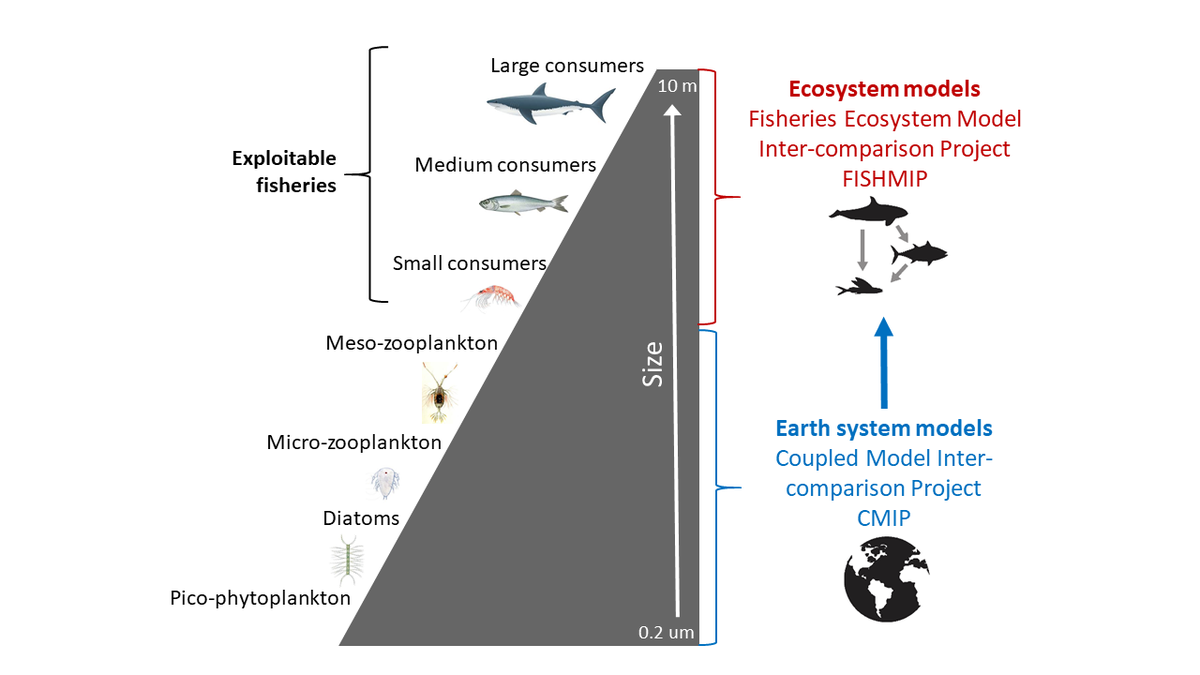Our Approach
We use an ensemble modelling approach to combine the results from multiple ecosystem models, all forced by standardized inputs and scenarios. We use combinations of Earth System Models (ESMs) and representative concentration pathways (RCPs) to provide model inputs, along with simplified fishing scenarios. Our marine ecosystem models are both at global and regional scales, and vary widely in terms of how they represent food-web or ecosystem components and the links between them. Ecosystem components can be represented by size classes, functional groups, trophic levels, species groups, and life-history stages, whereas links can be represented by who-eats-whom networks, diet composition or energy transfer.

Ongoing studies: FishMIP 2.0
We are using a two-track approach with our simulation experiments (see below). Our major improvements over past protocols include: 1) standardised global fishing drivers and 2) improved representation of coastal processes in our climate forcings. We are currently running simulation experiments to evaluate models for how well they can detect past ecosystem and fisheries changes and to work towards an attribution framework.
More information on our current protocol (contributing to ISIMIP 3a) can be found here.
FishMIP model outputs from past simulation rounds can be found here. You are welcome to use these data in your projects, but we encourage you to contact the FishMIP modellers and coordinators responsible for the work, and to reference the publications which provide further details. See ISIMIP’s Terms of Use for further guidance.